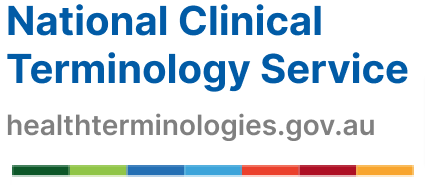Technical approaches
SNOMED CT can be implemented through a variety of technical architectures. We publish native SNOMED CT RF2 distribution files and FHIR terminology resources via the NCTS. You can choose the most suitable technology for your requirements and use cases. We encourage vendors and implementers to use our terminology services where possible to avoid the duplicated effort of understanding SNOMED CT. This approach will also help to insulate from possible future change.
How is SNOMED CT distributed?
Native release files
 Benefit: Harness the full power of SNOMED CT with flexible data extraction.
Benefit: Harness the full power of SNOMED CT with flexible data extraction. Consider: Requires advanced technical expertise in the RF2 specification and any SNOMED CT enhancements.
Consider: Requires advanced technical expertise in the RF2 specification and any SNOMED CT enhancements.
SNOMED CT is distributed in a set of tab-delimited text files. This distribution format is called RF2 and supports terminology management and versioning.
You can load the text files into any type of database, datastore or in-memory data structure that can be accessed within an application, to support the required functionality.
Typically designed for relational database management systems, the files are also compatible with non-relational (e.g. document-oriented) databases.
FHIR terminology resources
 Benefit: Developers don’t need to manage the complexities of terminologies.
Benefit: Developers don’t need to manage the complexities of terminologies. Consider: FHIR data formats may not be compatible with legacy systems.
Consider: FHIR data formats may not be compatible with legacy systems.
The NCTS also makes SNOMED CT data available via a terminology service to make it easy to keep up to date with the latest national release.
Automate downloads of RF2 files or FHIR bundles to load into local database structures from the syndiction server.
One step further is to deploy your own local terminology server instance that syndicates pre-processed indexes (so you don’t have to process the files) and interrogate the data via standard FHIR APIs.
Which technical approach: NCTS FHIR terminology services or native SNOMED RF2 files?
| Benefit |
|---|
| Latest terminology content readily available, therefore less maintenance overhead |
| Support for multiple terminologies e.g. SNOMED CT, LOINC |
| Access to pre-indexed binary files, therefore less processing of release files |
| High performance read operations on large code systems |
| Multiple instances can be set up behind a load balancer to share requests |
| Optionally implement the standard interfaces for syndication and terminology services |
| Ready to deploy multi-tiered syndication architectures |
| Built-in role-based access control system and the ability to integrate with an OAuth 2.0-compatible authorisation server |
| Ready to load in a relational database |
| Data query languages (e.g. SQL) can be used, therefore specific knowledge of ECL (query language for SNOMED CT) not required |
| Easier access to historical terminology data |
| Support from the NCTS team |
| FHIR | RF2 |
|---|---|
 |  |
 |  |
 |  |
 |  |
 |  |
 |  |
 |  |
 |  |
 |  |
 |  |
 |  |
 |  |
How do I choose the technical approach?
Consider the following before choosing a technological approach to SNOMED CT.
What use cases will SNOMED CT support?
Common functional use cases include:
- clinical data entry and retrieval.
- exchange of data.
- aggregated clinical summaries for reporting.
- clinical decision support.
How will SNOMED CT fit into planned or existing infrastructure and architecture?
Considerations include:
- current database structures.
- adoption of new standards.
How should the application meet performance requirements?
Considerations include:
- indexing or other lexical optimisation techniques.
- transitive closures.
- loading the relationships into memory for faster processing.
- caching.
- parallel processing approaches.
How will SNOMED CT updates be managed?
Systems will evolve, and there will be enhancements to the content and structure of SNOMED CT. There is a continuing requirement to manage changes smoothly and without loss of information or funcitonality.
Will you need access to other FHIR terminology resources?
The NCTS provides access to LOINC and other code systems that support recording of information in electronic health records.
See also:
Terminology as a service
Native SNOMED CT RF2 files
Considering implementing
SNOMED CT-AU?
Healthcare providers and software vendors: please get in touch so we can advise on the best approach.

Call 1300 901 001
8am – 5pm (AEST/AEDT), Monday – Friday


